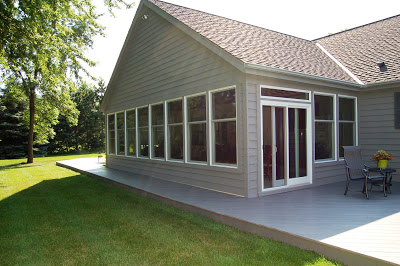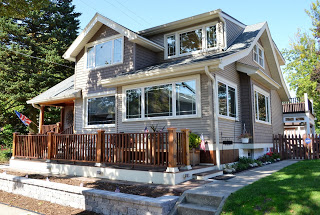by Christopher Wittmann
As a child who loved playing outside (and still does!), I remember my mother always telling me to protect my body from the sun and heat by using lotion or covering up with light or loose clothes. In the winter, protection meant wearing multiple layers of clothing along with a hat, scarf, and gloves to ensure my body was kept warm and dry. When it comes to our homes, those same lessons still apply.

Protecting our investment is a means to ensure that issues don’t creep up. Siding our homes with durable, aesthetically pleasing, and low maintenance products is one way to do this. In the past, paint was the product to ensure we protected our homes’ “skin.” Whether it was wood or aluminum siding, it was a chore to scrape and paint it every few years. Safety also became a concern, especially when it came to painting the hard-to-reach areas. With the advent of low-maintenance siding products, those days are gone.
Callen offers a variety of types, styles, and colors of siding to suit just about anyone’s tastes. Two types that can make a dramatic impact on curb appeal are Vinyl siding and Insulated Vinyl siding.
Vinyl siding, which has been around since the early 1960’s, has historically received a bad rap, as it was seen as a cheap siding alternative. It was known to warp in extreme climates and easily fade. Quoting Henry Ford’s adage of “Any client can have a car painted any color he wants so long as it is black,” colors were limited to lighter tones to ward off heat absorption and profiles were limited to horizontal clap board style.
Through the years, manufacturers such as Mastic and Royal changed this paradigm and reformulated their products, greatly increasing sustainability and color retention in all climates. Not only are deep, dark, and rich colors now offered, profiles such as Shake, Shingle, Half Rounds, Vertical Board and Batten, Dutch Lap, and Architectural Accents have been added to the mix.
Insulated Vinyl Siding
Though Vinyl siding is a solution to protect the outer shell from the elements, energy savings now plays a major role in siding replacement. One way to combat the effects of heat and cold is by ways of Insulated Vinyl siding.
There are two schools of thought when it comes to insulating our houses. The most common is to retain the conditioned or heated air inside the house by ways of wall and attic insulation. Another way to providing increased energy efficiency is counteracting the “thermal bridging” effect in homes. Thermal bridging occurs where the interior and exterior of a home are connected, or bridged, by a poorly insulating material; an example of this kind of bridge would be the wall studs that interrupt the insulated stretches of a wall and allow heat to flow between the home’s interior and the outdoors. Using Insulated siding helps erect a barrier to prevent heat loss (or gain) at the points where the studs contact the outer wall of the house and at other areas where thermal bridging commonly occurs.
 Companies such as Mastic and Royal are those that, back in the early 1990’s, started laminating foam insulation to the backside of the Vinyl siding. Expanded polystyrene (EPS) is the most common insulation material used in Insulated siding. Not only can it increase the insulation R-factor (the resistance to heat loss), it creates straighter lines and lays flatter than conventional Vinyl siding, making it more effective on irregular walls. It also reduces outside noise, and reduces the amount of heat loss or gain from the house.
Companies such as Mastic and Royal are those that, back in the early 1990’s, started laminating foam insulation to the backside of the Vinyl siding. Expanded polystyrene (EPS) is the most common insulation material used in Insulated siding. Not only can it increase the insulation R-factor (the resistance to heat loss), it creates straighter lines and lays flatter than conventional Vinyl siding, making it more effective on irregular walls. It also reduces outside noise, and reduces the amount of heat loss or gain from the house.
To aid in reducing moisture retention behind the siding, products such as Royal’s “Mill Run” starts with a thicker EPS foam that is compressed to the desired thickness to reduce the porosity of the foam. In addition, grooves are machined diagonally on the back of the foam aiding in the reduction of moisture that can sit behind the siding.
Many of the manufacturers we work require training classes to teach us the methods necessary to ensure proper fit and form during installation. Callen is a company that deems it necessary that we always take advantage of these and many other educational opportunities offered through third-party entities such as the National Association of the Remodeling Industry (NARI) and Vinyl Siding Institute (VSI). That way we are installing your products in the most current and recommended methods.
Let Callen’s team of Exterior Product Specialists show you the many Vinyl siding options available and discuss how we can transform your home into one that grabs attention, is more aesthetically pleasing, reduces heating and cooling costs, and allows you more leisure time with virtually no maintenance.



Leave a Reply